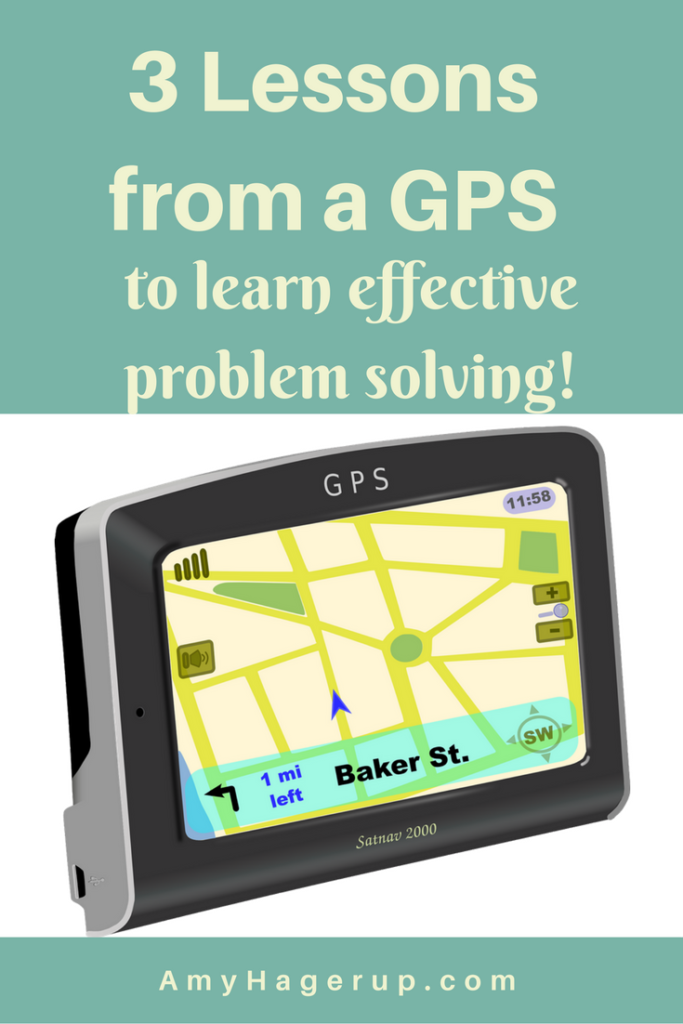Lessons from a GPS: Effective Problem Solving
Category: Faith

I was so frustrated the other day. I got yet another email informing me of a second autoship that went through for one of my Shaklee members.
Oh yes – autoships are a good thing, but not when a second notice comes through within five days for the same person! It means my friend wasted money on shipping when the autoships could have been combined.
She hadn’t understood that.
And I felt responsible for the error.
So I took the bull by the horns and decided to put together a short video explaining how to do an autoship.

That brings me to my subject. I actually followed the 3 steps illustrated to us by our trusty ol’ GPSes. (GPS stands for Global Positioning System and is a device used to direct us when we are driving somewhere.)
 3 steps to effective problem solving as modeled by the GPS:
3 steps to effective problem solving as modeled by the GPS:
1. Set your goal where you want to go. If you want to go out to eat at an Ethiopian restaurant in the city, you have to get the address first in order to set that destination in the GPS. (Okay – I know – most of them can find the address for you themselves, but you are missing my point.)
Do you know where you want to go with the particular problem you are trying to solve? This could mean you need to do some learning, studying, researching, or asking others to learn where you want to go.
In parenting, you might have the goal to eliminate whining from your children. So you will learn what others did to get that result.
In your health, you might want to lose weight. So you spend time learning about healthy weight loss options and healthy eating.
With making a video for autoship for my Shaklee members, I took time to research on the web how to capture my screen and make an audio to go along with it.
You see, learning has to go hand-in-hand with setting a goal.
2. Take action. Now that you know where you want to go, you get it all programmed into your GPS. What is the next step?
You pull out onto the street and get going!
Taking action is necessary or you never will get to your destination.
To eliminate whining, you begin giving consequences for whining. You praise your child when whining wasn’t used.
With weight loss efforts, you make healthier choices. You visualize your new slim self as you drink your breakfast protein shake.
I actually have said MANY times that I needed to make an auto-ship tutorial for my Shaklee members. But . . . I wasn’t taking action. The lofty goal was there – but there was no action to follow through.
The other day I took action and did all three steps.
Which brings me to the third step that trips up a lot of people (no pun intended):
3. Recalculate. If you have the joy of owning a Garmin GPS, you have most likely experienced the lovely voice saying “recalculating” when you decide to make a detour from her specific instructions.
Recalculating needs to happen when we are in the “taking action” step and something doesn’t work that well. We have to make a few corrections to the plan we are implementing.
In parenting, maybe the consequence of time out wasn’t working too well. In fact, your child seemed to like time in his room. So you “recalculate” and switch to “no media” for a consequence.
In your weight loss efforts, you found out that you just didn’t enjoy that particular exercise video. So you “recalculate” and add in a daily 30 minute walk instead.
With the making of the auto-ship tutorial video, I found that the first screen capture free program I downloaded didn’t allow me to save the video I created. So I searched for another free one and found a you-tube video telling me how to use Screencast-o-matic. Bingo. I “recalculated” and kept on my journey.
Then you go back to step 2 of take action, followed by step 3 of recalculating when needed, focusing on the goal until you reach your final destination.
And yes, I did reach my destination and I got that video done in good time.
What problem are you grappling with right now?
Try the GPS guide to effective problem solving with these 3 steps.
Post Updated: August 2022





37 comments on “Lessons from a GPS: Effective Problem Solving”